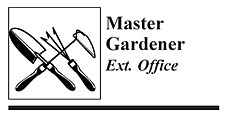April 19, 2007 at 8:44 a.m.
However, one of my calls this week was about using manure on rhubarb. Carl Rosen and Peter Bierman, Dept. of Soil, Water and Climate, wrote an article called Using Manures in Gardens in the April 1, 2007, issue of the Yard and Garden News. You can view the entire article online at: http://www.extension.umn.edu/projects/yardandgarden/YGLNews/YGLNews.html.
Manure has been used as a soil amendment for centuries by farmers and gardeners to improve plant growth. Manure supplies nutrients needed by plants and is a valuable source of organic matter. Increasing soil organic matter improves soil structure, increases water-holding capacity, reduces wind and water erosion, and promotes the growth of beneficial soil organisms.
All types of fresh manure pose some health risks to humans if not properly handled or processes. Fresh manure from all animals contains various strains of bacteria such as E. coli that can cause gastro-intestinal illness. The recent problems associated with fresh spinach and lettuce consumption were related to contamination with manure at some stage during production, possessing or handling of the produce. The fresh manure from non-herbivores like cats and dogs may contain other types of disease-causing organisms.
In most garden situations, manure should be composed or heat treated before use. This is especially true if the manure is being used as a nutrient source to grow vegetables or fruit for fresh consumption or if it's being used as a mulch. Heat generated during the composting process will kill most pathogens, provided temperatures are maintained at or above 131 degrees F for 15 days or more. Also, if the compost is turned several times so that all material are exposed to this temperature for a minimum of three days.
Aged manure, or manure that has sat for an extended period of time and is partly decomposed, will have reduced pathogens levels compared with fresh mature. However, it may not be pathogen free and it is quick to treat aged manure in the same way fresh manure is treated.
Dried manure products can often be purchased at garden centers. Heat drying will eliminate most pathogens if temperatures exceed 150 to 175 degrees F for at least one hour and water content is reduced to 10 to 12 percent or less.
Advantages of dried manures include they are easier to handle, spread more uniformly, and have a much higher nutrient value than composted manure.
The nutrient content of these products varies with animal, bedding, storage and processing. Poultry manure compost usually has a higher nitrogen content than compost made from horse or cattle manure. Applying manure rates that are too low can lead to nutrient deficiency and poor plant growth. On the other hand, too high a rate can contribute to nitrate leaching, phosphorus runoff leading to algal growth in lakes, and excessive vegetative growth of some crops.
Composed manure is applied based on its nitrogen content. The nitrogen content of composts will range from about 0.5 percent to about 3 percent and only about 10-15 percent of that nitrogen will be available over the first growing season.
The greatest benefit from manure compost will be attained if it is incorporated into the soil. If your compost has 1 percent nitrogen, then about two pounds of compost should be applied per square foot. If your compost has 2 percent nitrogen, then one pound of compost should be applied per square foot. The nutrient value of the compost is often provided if you purchase it from a garden center. A recommended rate of application will be provided on the bag.
+++++
We still have some bare root plants for sale although we are running low on some varieties.
+++++
Due to the office hours at the Extension Office in North Branch being reduced, some requests for information may be delayed. Therefore, I do not mind if you call me at my home regarding plant orders or class offerings. My number is 651-257-4496.
+++++
The next classes in our Garden Fever series are:
Saturday, April 21--Managing Fruit Tree Pests and Raising Strawberries and Raspberries
Tuesday, April 24--Pruning Trees and Shrubs
Class brochures as well as the plant order forms are available on the website at www.extension.umn. edu/county/chisago or you can call the Extension office at 651-674-4417 to have one mailed to you.
A cutback in staffing has made it necessary for the Extension Office to limit hours of operation. At present, the office will be open on Tuesdays and Thursdays. We would suggest that you call ahead to verify that the office is open before you stop by.




Comments:
Commenting has been disabled for this item.